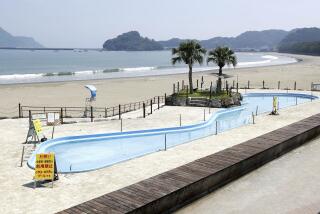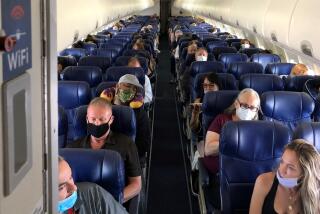NRC issues nuclear safety recommendations
The staff of the Nuclear Regulatory Commission issued a dozen recommendations Wednesday to improve the safety of U.S. reactors, responding to the Fukushima Daiichi nuclear disaster in Japan four months ago.
The 96-page report called for improving accident mitigation, strengthening emergency preparedness and improving the agency’s regulatory programs, but fell far short of what outside experts have advocated for a wholesale upgrading of nuclear safety.
The report, issued by the NRC’s Japan task force, said that U.S. plants should reevaluate and upgrade their designs for earthquakes and floods, double-checking those plans every 10 years. The Fukushima plant was hit by a magnitude 9 earthquake and massive tsunami, events that overwhelmed the plant’s safety systems.
In one specific recommendation, the NRC said that U.S. plants affected by a blackout like the one in Japan should be able to cope without electricity — even their own emergency electrical power — for at least eight hours and should have procedures to keep the reactor and spent-fuel pool cool for 72 hours.
The NRC’s Japan task force concluded that existing U.S. nuclear plants “can be operated safely” and that “a sequence of events like the Fukushima accident is unlikely to occur in the United States.”
But critics, including the Union of Concerned Scientists, say the conclusion misses the point that the events in Japan also were unlikely, and that the U.S. should require operators to begin preparing for severe and extreme low-probability disasters.
The short-term NRC report is the first step in what will be a long-range examination of the Fukushima disaster.
The report issued Wednesday is based on incomplete information and analysis, meaning that the NRC and the industry are not yet prepared to move forward with regulatory changes, said Anthony Pietrangelo, chief nuclear officer of the Nuclear Energy Institute, the trade association that represents the industry that builds and operates commercial nuclear reactors.
“We need a lot more information to define what we are trying to solve,” he said. “You can’t just react to what you are seeing on television.”
In some areas of technology, it will require study and analysis for more than five years, he said. In the meantime, Pietrangelo said nothing in the recommendations, even if fully adopted by the commission, would shut down any of the 104 commercial reactors in the U.S.
The Union of Concerned Scientists, a nuclear watchdog group, issued its own set of recommendations Wednesday that would go much further than the NRC’s. It suggested that U.S. nuclear plants be prepared for extreme events. The organization also would require nuclear plants to store more of their spent fuel in dry casks, rather than pools that can overheat in an accident.
It also was critical of the NRC’s methodology, noting that it met with industry officials but not outside groups.
“We were somewhat disappointed that the task force did not meet with the public during its deliberations,” said David Lochbaum, an official at the union.
More to Read
Sign up for Essential California
The most important California stories and recommendations in your inbox every morning.
You may occasionally receive promotional content from the Los Angeles Times.











